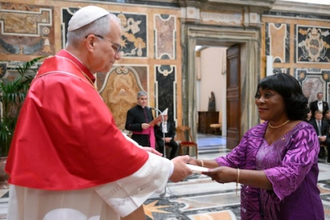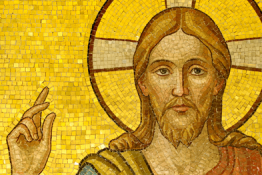Book: The nun, the defiance campaign and South Africa's secret massacre

Bloody Sunday - The Nun the Defiance Campaign and South Africa's Secret Massacre - by Mignonne Breier, Tafelberg/Media24 books Pty (Ltd) First edition 2021
On Sunday, 9 November 1952, the largest mass killing of black South Africans by the apartheid regime reputedly took place in an obscure 'Native Location' outside the 'white' picture-postcard seaside town of East London. And was covered up.
However, the events of that weekend could not be completely hidden - as one aspect of what turns out to be a long and complicated chain of events in fact became not just lurid headline news in South Africa - but around the world: the murder, dismemberment and rumoured cannibalism of the body, in this remote dustbowl called Duncan Village, of Dominican nun and revered medical doctor Sister Aidan. Yet ever since that fateful Sunday, the shade of 'Sister Doctor' Elsie Quinlan, once of Ireland's County Cork, has been a silent witness, pointing from the grave to the unknown masses who died during the frenzied police retribution that followed, and whose stories are inextricably intertwined with hers.
By the date of that fateful Sunday, the ANC had been following a non-violent policy for an unbelievably patient five decades, focused on the hope of gradually equalising the country's situation. When Mandela and his 'young guns' were elected to the ANC executive in 1947, displacing a 'fuddy duddy' old guard, they conducted a study of Gandhian passive resistance techniques, which had been invented right in the heart of old Johannesburg during Gandhi's early 20th century South African sojourn.
The ANC devised the idea of launching a country-wide programme of peaceful passive resistance protests. Known as the 'Defiance Campaign', all actions were meticulously planned, with 'defiers' being carefully trained, and the focus being the hardly threatening breaking of 'petty apartheid' laws, such as entering a post office though the 'wrong' entrance. The real threat, however, to the state was less the campaign - but the skyrocketing increase in ANC membership which followed.
By late 1952, black communities were used to police brutality. But the police reaction to the Defiance Campaign, which kicked off in April 1952, was a doleful bellwether for a seemingly endless ratcheting up of state sponsored terror over the next five decades.
On that day, Sister Quinlan went about life as usual. She and her small multiracial group of Dominicans were used to disturbances in Duncan Township, where the white nuns had had to get special permission to live. Just two years into her work there, 'Sister Doctor', the other nuns noted, was often preoccupied, even confiding to Sister Ursula that she suffered from depression. A powerful feature of this book is how the author has skilfully been able to reconstruct aspects of Sister Aiden's inner life.
But what ailed Sister Aiden? After arriving in South Africa in the 1930s to join the pioneering order of Dominicans in remote King Williams' Town, Eastern Cape, the brilliant young postulant won the jackpot. Supported by the church, she applied for and completed a medical degree, building on her possession of an Irish BSc, at Johannesburg's prestigious University of the Witwatersrand. By Breier's account, Elsie adored this time, stretched by the challenge, the stimulation of cosmopolitan Johannesburg, and the opportunity to serve.
Upon arriving back in downtrodden Duncan Village, Sister Aiden was confronted with the reality of apartheid's dire social consequences. Her records tell a grim story. A routine day would entail her seeing up to 170 patients, many of them suffering completely preventable conditions such as beriberi, pellagra, kwashiorkor and scurvy, amongst others. Elsie Quinlan's agonised private straw poll of infant mortality was close to 100%.
One gets the impression that Sister Aiden was much loved, but that she was also no-nonsense. What she might have done to publicise the truth about South Africa's contemptible lie 'separate but equal', one can only speculate. But Elsie Quinlan died unexpectedly that Sunday at the hands of a mob driven beyond bearing, not only by their relentlessly squalid conditions, but against the backdrop of three separate sets of police killings of unarmed protestors whose chief offence was stone throwing. In the previous three-four weeks, no fewer than 22 people had died by gunshot in confrontations with police in Johannesburg, Kimberley and Port Elizabeth, with dozens more wounded. Tensions had escalated to make Duncan Village a tinder box.
The spark which lit the explosion was the response of the police to a 'religious' meeting that had been planned - legally - for the centre of Duncan Village. However. Political meetings were prohibited. When it became clear that the meeting was indeed addressing politics, the police, armed with 1952's version of an AR15, ordered dispersal. When this was ignored, they declared open season on this already grotesquely abused community.
But even this did not precipitate the mob. It was only when the Minister of Justice refused to take a frantic call from community leaders, that, as one eyewitness put it 'Our people then turned on the whites in the Location …' Sister Quinlan, enjoying an afternoon trip in her beloved car, drove into an enraged mob heading for 'white' East London. Stoned, then overturned and set alight, individuals in the crowd who tried to help were beaten back. When the police returned to the scene, much of the nun's body had been torn away, leaving a torso and part of the head. Later, her rosary, clutched by a few burned finger bones was recovered.
But the killing was not over. Throughout the night, police troop carriers drove through the township raking the flimsy homes with automatic gunfire, killing indiscriminately. Breier's researched evidence posits the dead as over 200 - certainly not the mere eight admitted to by the police. Reportedly, terrified families simply melted into the surrounding bush and buried their dead 'unofficially', as both morgues and hospitals were monitored by the Secret Police collecting names of 'agitators'.
As forensic journalism this book is a crucial study of early apartheid and the ANC's ethical and careful responses. But above all it memorialises the life of much-loved 'Dr Sister' Elsie Quinlan and the unknown numbers of Duncan villagers who also died that summer's night.


















